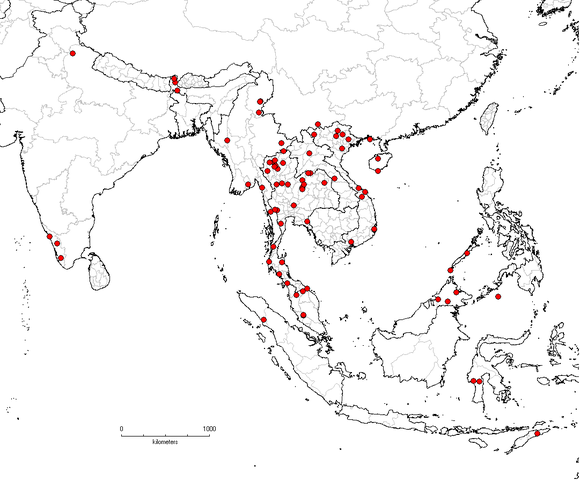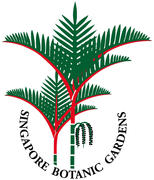Nomenclature
Merremia vitifolia (Burm. f.) Hallier f., Bot. Jahrb. Syst. 16: 552. 1893.
Convolvulus vitifolius Burm. f., Fl. Indica 45. 1768
Convolvulus angularis Burm.f., Fl. Ind. 46, t. 18, f. 1. 1768.
Ipomoea vitifolia (Burm.f.) Blume, Bijdr. 709. 1825.
Ipomoea vitifolia var. angularis (Burm.f.) Choisy in DC., Prodr. 9: 361. 1845.
Description
Fang R.C., G. Staples, et al. 1995. Convolvulaceae in P. Raven & C.Y. Wu (eds.) Flora of China 16: 271–325.
Biogeography, Ecology and Natural History

China (Guangdong, Guangxi, Hainan, Yunnan), India, Indonesia, Laos, Malaysia, Myanmar, Nepal, Sri Lanka, Thailand, Vietnam.
China: Roadsides, thickets,
forests; (100–)400–1600 m.
Thailand: Sunny areas and
clearings in thickets and forest, secondary vegetation, cleared areas, fields,
roadsides, reported on limestone-derived soil; altitude: 80–1200 m.
Flowering: January, February, December; fruiting: January, April.
Fang R.C., G. Staples, et al. 1995. Convolvulaceae in P. Raven & C.Y. Wu (eds.) Flora of China 16: 271–325.
Staples, G. 2010. Convolvulaceae. Fl. Thailand 10(3): 330–468.
Other information
Authorship for webpage


Add new comment